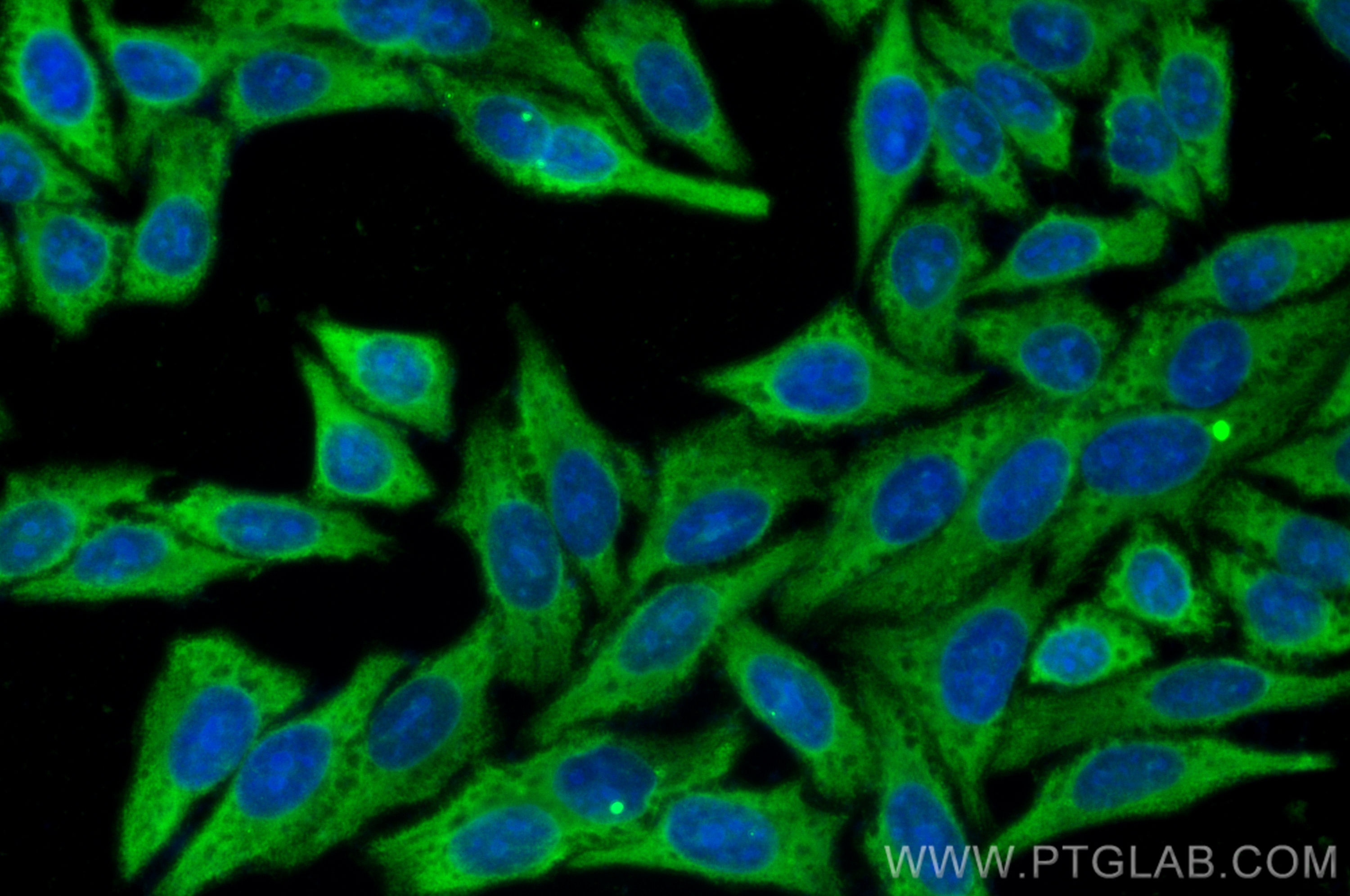Validation Data Gallery
Tested Applications
| Positive IF/ICC detected in | HepG2 cells |
Recommended dilution
| Application | Dilution |
|---|---|
| Immunofluorescence (IF)/ICC | IF/ICC : 1:50-1:500 |
| It is recommended that this reagent should be titrated in each testing system to obtain optimal results. | |
| Sample-dependent, Check data in validation data gallery. | |
Product Information
CL488-21799 targets LDHA in IF/ICC applications and shows reactivity with human, mouse, rat samples.
| Tested Reactivity | human, mouse, rat |
| Host / Isotype | Rabbit / IgG |
| Class | Polyclonal |
| Type | Antibody |
| Immunogen |
CatNo: Ag16703 Product name: Recombinant human LDHA protein Source: e coli.-derived, PGEX-4T Tag: GST Domain: 283-332 aa of BC067223 Sequence: IKDDVFLSVPCILGQNGISDLVKVTLTSEEEARLKKSADTLWGIQKELQF 相同性解析による交差性が予測される生物種 |
| Full Name | lactate dehydrogenase A |
| Calculated molecular weight | 332 aa, 37 kDa |
| Observed molecular weight | 32-37 kDa |
| GenBank accession number | BC067223 |
| Gene Symbol | LDHA |
| Gene ID (NCBI) | 3939 |
| RRID | AB_3084056 |
| Conjugate | CoraLite® Plus 488 Fluorescent Dye |
| Excitation/Emission maxima wavelengths | 493 nm / 522 nm |
| Form | |
| Form | Liquid |
| Purification Method | Antigen affinity purification |
| UNIPROT ID | P00338 |
| Storage Buffer | PBS with 50% glycerol, 0.05% Proclin300, 0.5% BSA{{ptg:BufferTemp}}7.3 |
| Storage Conditions | Store at -20°C. Avoid exposure to light. Stable for one year after shipment. Aliquoting is unnecessary for -20oC storage. |
Background Information
Lactate dehydrogenase (LDH) is composed of A subunits predominate in skeletal muscle and B subunits are abundantly produced in brain and heart. The LDHA (lactate dehydrogenase A) and COPB1 (coatomer protein complex, subunit beta 1)genes, are involved in energy metabolism and protein transport processes. Both genes might play important roles in muscle development. It has some isoforms with the molecular mass of 27-40 kDa and can form a homotetramer(PMID:11276087).
Protocols
| Product Specific Protocols | |
|---|---|
| IF protocol for CL Plus 488 LDHA antibody CL488-21799 | Download protocol |
| Standard Protocols | |
|---|---|
| Click here to view our Standard Protocols |

